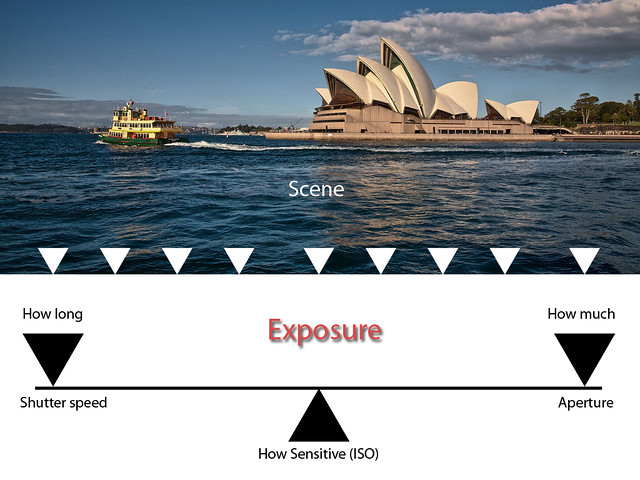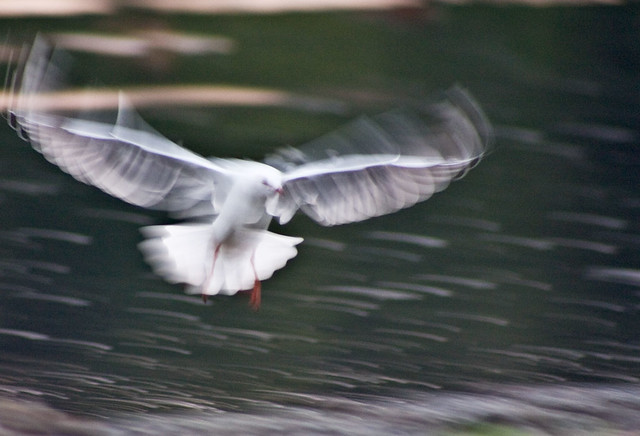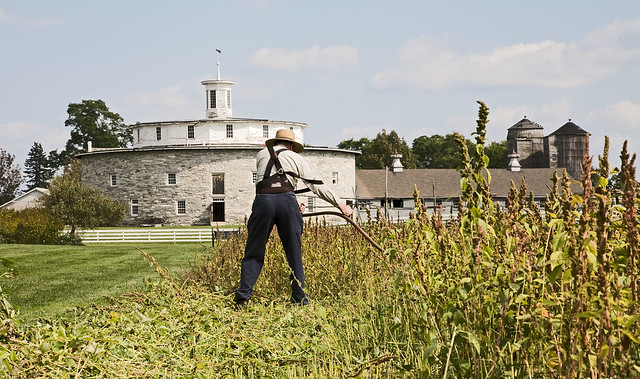Exposure (1) Introduction
A balancing act.
When you take a photograph the camera collects light to turn it into an image.

================================================== =
How much light it needs to collect is determined by the cameras sensitivity (ISO)
How much light it collects is determined by
(1) How long it collects light for (time) and is determined by the shutter speed (in seconds).
Plus
(2) How much light the lens will let in which is determined by the aperture (size of the hole) in the lens. Aperture is expressed in F stops (numbers) and as it is a ratio it may be a bit confusing. Low F numbers let in a lot of light, increasing the F number stops more light.
When everything is in balance, and the sensor collects the correct amount of light, the picture is "correctly" exposed, as per the example above.
================================================== =
When the sensor collects too much light (either because the shutter speed was too long and/or the aperture was letting in too much light - low F number) the picture is said to be over exposed and will look too bright - washed out.
Conversely under exposure means the picture is too dark and is caused by the sensor not collecting enough light, either because the shutter speed was too short and/or the aperture was not letting in enough light - high F number)
If the picture is "blurry" it may be due to the exposure being too long and the camera was moved or the subject was moved.
Here is an example where the bird is moving too fast for the shutter speed and the camera is being moved as well, notice the streaks on the water.

Taken at 1/15 second
======================================
When a camera is used in "Auto" or a "scene mode" it will look at the scene and determine the sensitivity (ISO) the shutter speed and the aperture to attempt to expose the picture correctly. For a lot of straight forward scenes it will be fine.
Example (I vary rarely use auto, however this will give you an idea)

Camera Canon EOS 5D
Exposure 0.008 sec (1/125)
Aperture f/14
Focal Length 80 mm
ISO Speed 200
When a camera is in P (program mode) it will set the exposure however you may vary the suggested settings and select the sensitivity (ISO)
With other modes like aperture priory/shutter priority you have even more control and in manual mode you have total control.
The main thing to remember it is a "balancing act".
ISO, shutter speed and aperture all work together and normally if you change one you change the other.
A balancing act.
When you take a photograph the camera collects light to turn it into an image.

================================================== =
How much light it needs to collect is determined by the cameras sensitivity (ISO)
How much light it collects is determined by
(1) How long it collects light for (time) and is determined by the shutter speed (in seconds).
Plus
(2) How much light the lens will let in which is determined by the aperture (size of the hole) in the lens. Aperture is expressed in F stops (numbers) and as it is a ratio it may be a bit confusing. Low F numbers let in a lot of light, increasing the F number stops more light.
When everything is in balance, and the sensor collects the correct amount of light, the picture is "correctly" exposed, as per the example above.
================================================== =
When the sensor collects too much light (either because the shutter speed was too long and/or the aperture was letting in too much light - low F number) the picture is said to be over exposed and will look too bright - washed out.
Conversely under exposure means the picture is too dark and is caused by the sensor not collecting enough light, either because the shutter speed was too short and/or the aperture was not letting in enough light - high F number)
If the picture is "blurry" it may be due to the exposure being too long and the camera was moved or the subject was moved.
Here is an example where the bird is moving too fast for the shutter speed and the camera is being moved as well, notice the streaks on the water.

Taken at 1/15 second
======================================
When a camera is used in "Auto" or a "scene mode" it will look at the scene and determine the sensitivity (ISO) the shutter speed and the aperture to attempt to expose the picture correctly. For a lot of straight forward scenes it will be fine.
Example (I vary rarely use auto, however this will give you an idea)

Camera Canon EOS 5D
Exposure 0.008 sec (1/125)
Aperture f/14
Focal Length 80 mm
ISO Speed 200
When a camera is in P (program mode) it will set the exposure however you may vary the suggested settings and select the sensitivity (ISO)
With other modes like aperture priory/shutter priority you have even more control and in manual mode you have total control.
The main thing to remember it is a "balancing act".
ISO, shutter speed and aperture all work together and normally if you change one you change the other.
No comments:
Post a Comment